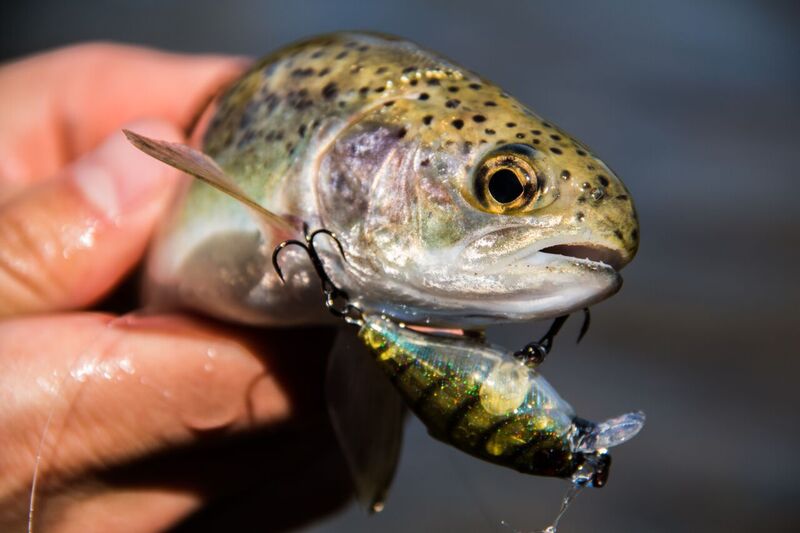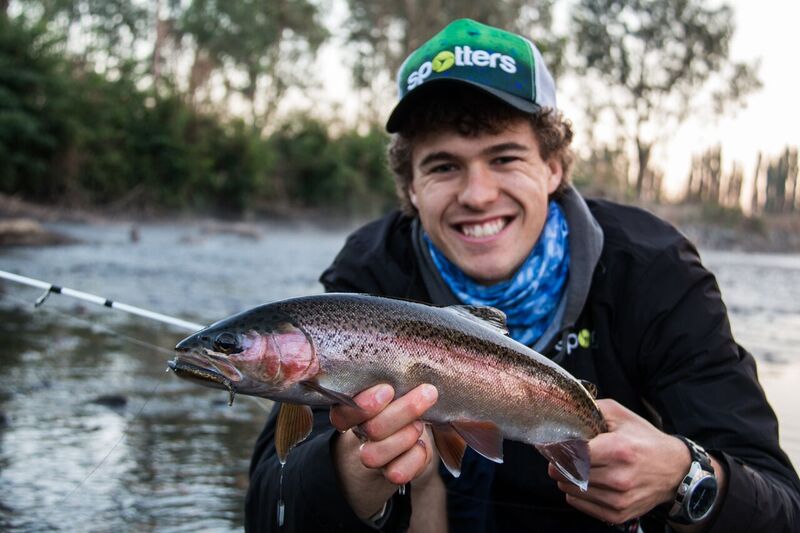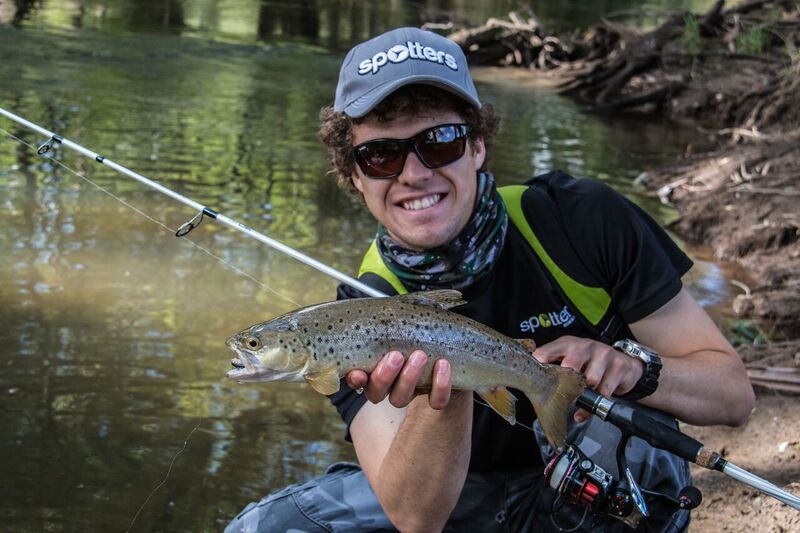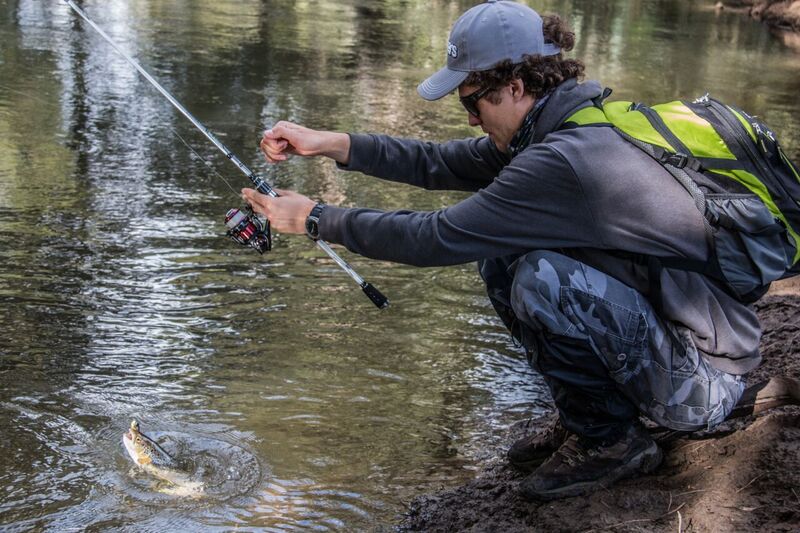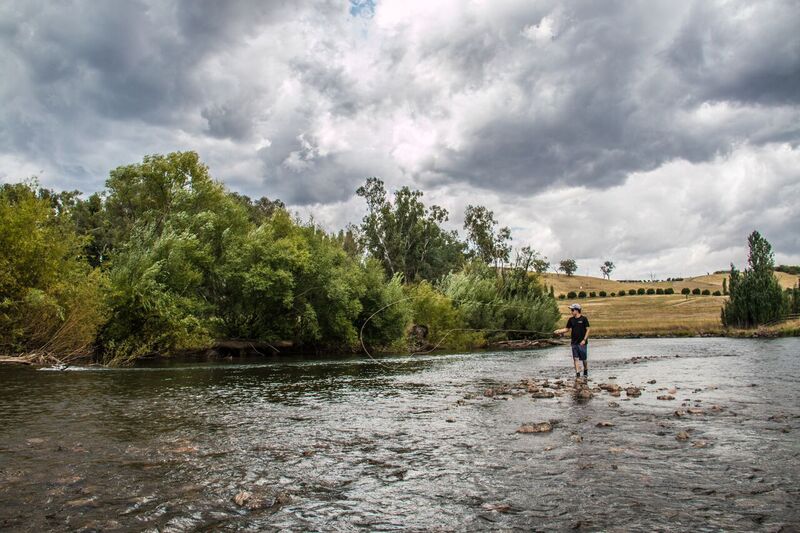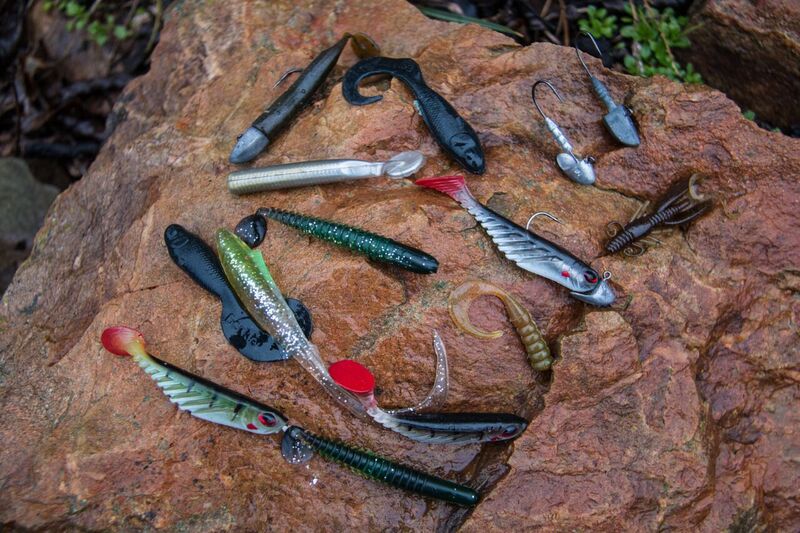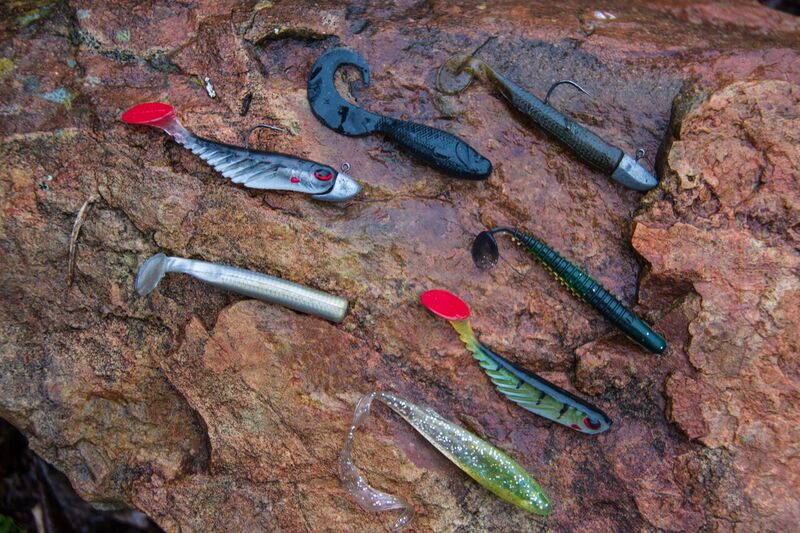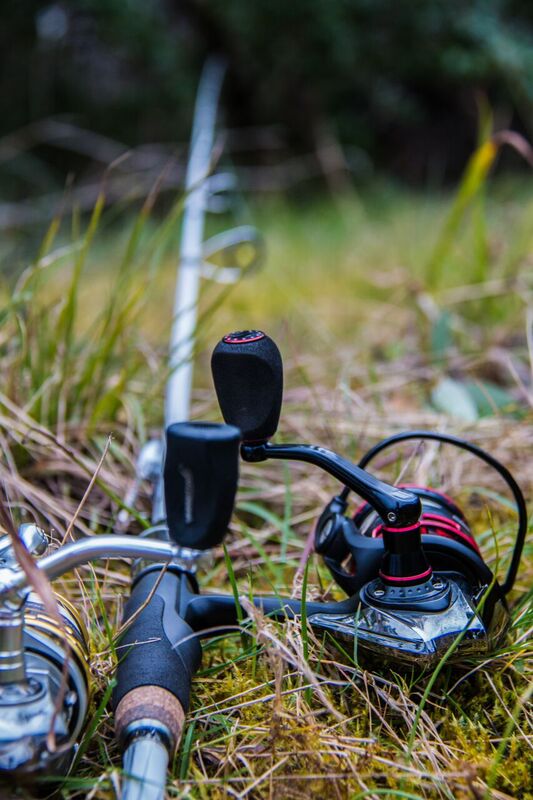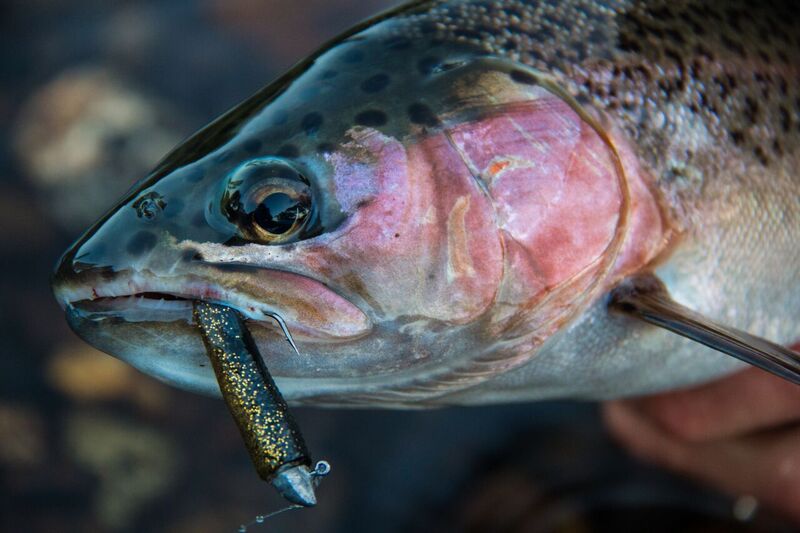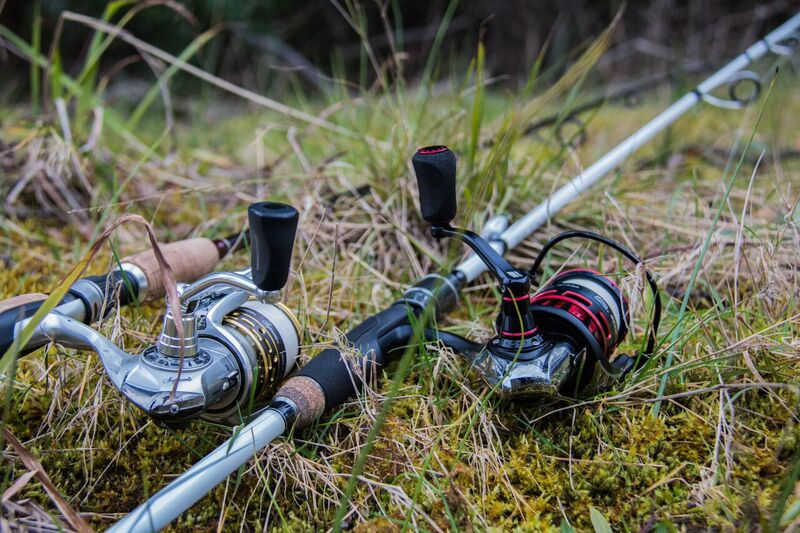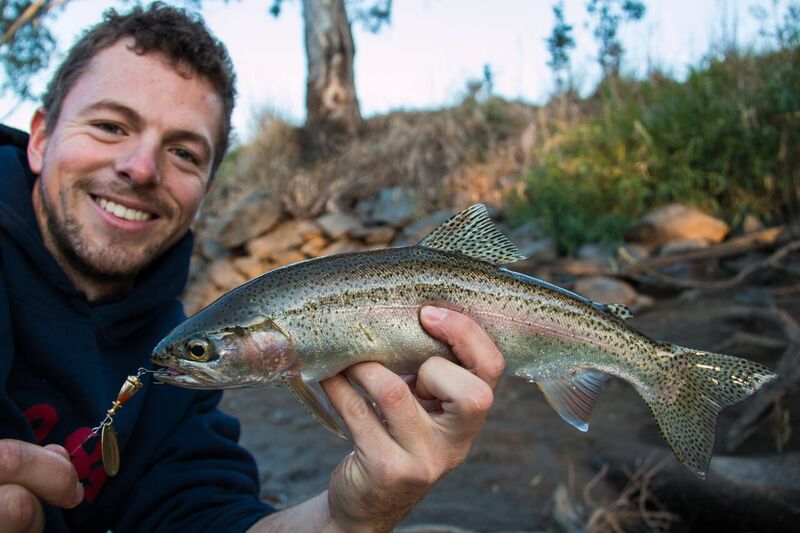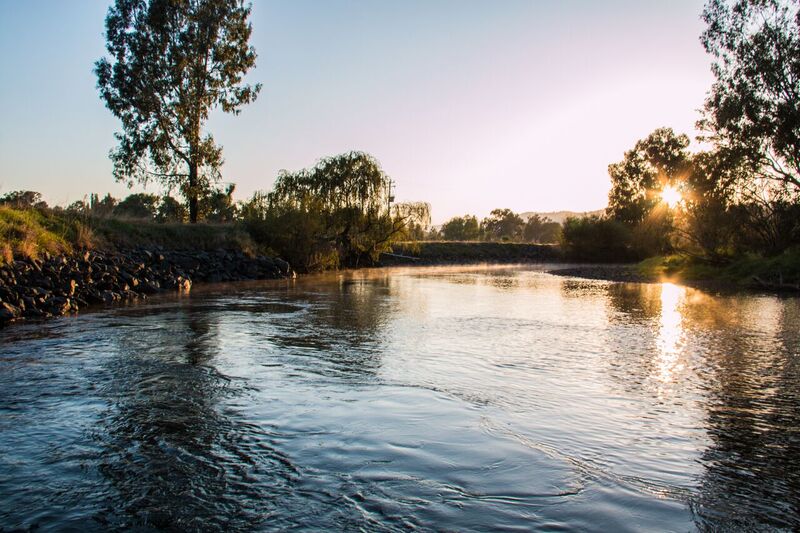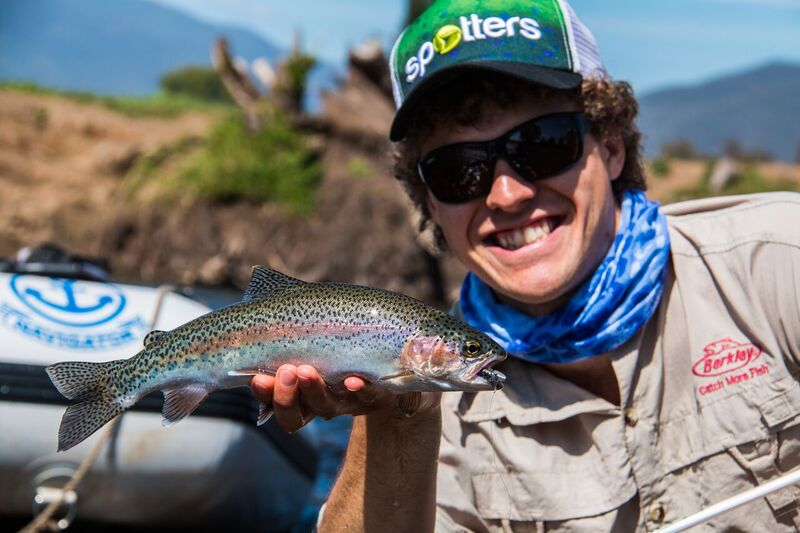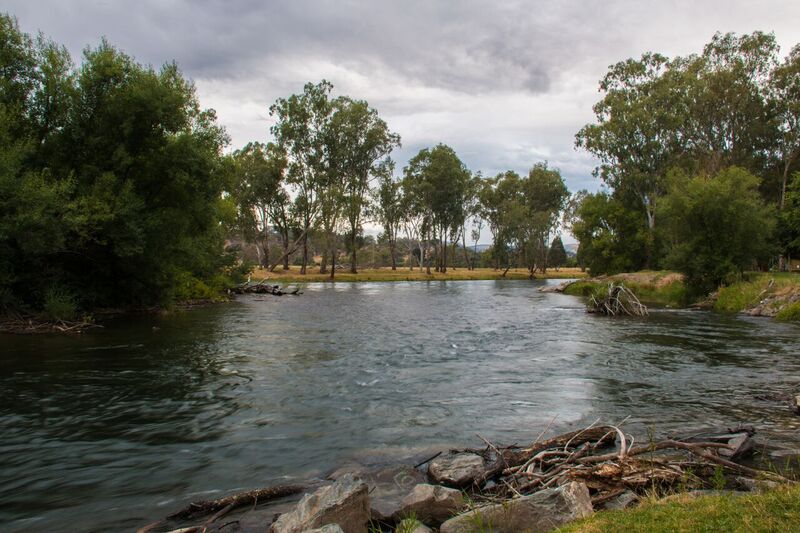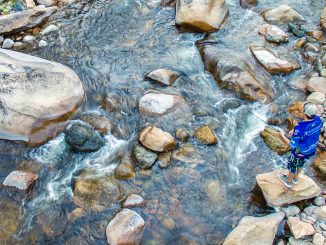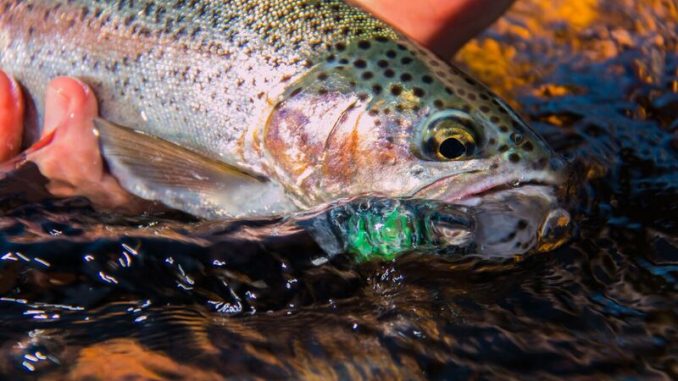
by Rhys Creed •
The October long weekend in Southern NSW means trout. The season re-opens and anglers can head back to the pristine waters to spin, cast or wave a fly. This is by far one of the most exciting times of year to target trout – they’re well rested after fishing pressure earlier in the year. The weather is beginning to warm up, which means more bugs and insect activity, the perfect combination for feeding trout.
The fishing during this first weekend can be unbelievable. Trout are keen for a feed after spawning. The Snowy Mountains and Southern NSW region is home to a range of pristine locations where anglers can spend a day fishing. There is a vast array of creeks, streams and rivers and they’re all different. From crystal snow melt streams in the upper reaches of the alpine region, all the way down to wide snaggy rivers that are home to both trout and natives in the warmer water, the opportunies are endless.
There is something for everyone and I’m going to share with you a few techniques, lures and fishing styles that will work well in this part of the country during spring. Here are the top tips for early season trout.
Research and Pre-Planning
Trout opening is a significant day and there will be plenty of people trying their luck. If you’re heading out, you’ll have plenty of company. There’s one way you can put yourself ahead of the crowd and it starts before the trip has even begun.
Planning and research is something you should consider if you want to be successful. That goes for any style of fishing. Understanding your target species, the waterway and the trout’s food source will put you ahead. If you really want to be in for a good chance come trout opening, head out to the area you’re going to fish and have a look around.
Suss out your area. Go for a drive or a walk along the bank. Look for fish-holding structure, pools, rapids, current lines and undercut banks with overhanging branches and shade. Take in every detail you possibly can and if you don’t have the best memory, take some photos.
I like to go out at first light and watch the trout to see their behaviour. They might be rising to specific bugs or chasing small fish in the shallows. It’s amazing what you learn about the fish you target if you take a step back and watch. This situation also helps, because you aren’t tempted to cast a line like other fishing trips. By surveying the area a few days prior to opening, you can be confident in your choice of location.
Get in Early
As we’re talking about trout opening, it would be good to mention how incredible the fishing can be on that first morning, especially in areas that are highly pressured by anglers. You want to get in early and beat the crowd, before the fish get caught or go back to their spooky ways. It doesn’t take long for fish to figure out what’s happening – in some locations it can be a matter of days. We have experienced the full potential of trout opening day and it can help to be the first person. Keep that in mind.
Late Runners
During the spawning season, trout will make their way upstream to reproduce. They do this so the fingerings can hatch and survive in the shallow river water, before heading back to the lake. This spring run is a big event in rivers that feed into big lakes. Lake Eucumbene in the Snowy Mountains is famous for it – anglers flock from everywhere before the closed season to get the early running fish. In saying that, this run happens in all rivers, including the ones that aren’t directly connected to lakes. All the fish go through this process of swimming upstream to seek out the perfect gravel bed for their eggs.
This usually happens over the three months that trout season is closed, and that’s the purpose of the closed season. We stop targeting them for this period so they can naturally reproduce without interruption. This provides the fish with the best opportunity to repopulate rivers with the next generation.
But as always, nature doesn’t run by our calendar. Some trout can run late and will still be in their breeding mood, which means they’re aggressive! During this period, trout are active and feed on the roe of other fish, which are bright orange. This is why you want to lean towards using bright and fluoro coloured lures – any hardbody, soft plastic or spinner with a bit of fluoro orange or yellow. Spotted dog patterned hardbodies will work well, as they have those bright dots along the side of the lure. Many trout lures are produced in this colour.
For those who like to flyfish, Glo Bugs are a perfect option at this time of year. If you’re not a flyfisher, you can still use them with your spin outfit. All you have to do is attach a small split shot 40cm up your leader from the Glo Bug, cast it into the river or stream and let it bounce down the rapids. It’s a really successful technique, especially in the upper alpine rivers like the Thredbo.
Match the Hatch and Use Trout Imitations
Let’s talk more generally about using lures that match what the fish feed on. You already know to use lures that represent roe, but the trout have other food sources as well. During October, we start to see a lot of insect and bug activity, and the more bugs that are flying around, the better the trout fishing becomes. Trout love insects!
Flyfishing is so popular and successful because majority of the flies match insects that fall into the water. If you want to try your luck with flies, use hopper imitations, emerging caddis, Royal Stimulator, bushy dun, black spinner and flying ant to name a few.
If you are spinning you want to look at small cricket imitation hardbodies and soft plastics that represent yabbies and insects. The Berkley PowerBait range is brilliant with a good selection of small trout soft plastics – T Tail Minnow, Bulky Hawg, T Tail Shad and Ripple Shad are some of the preferred options. You can’t go wrong if you use a lure that matches the food source of a fish. More detail in the lure is better. You need to be able to make the fish think your lure is real food.
Another imitation you can’t go past is a small hardbody that represents a juvenile trout. Brown and rainbow trout pattern lures are a favourite, simply because they work. After spawning season, there will be an abundance of small trout, which will become one of the top food sources for larger trout. I like the Rapala CD3, CD5 and CD7 in the rainbow, brown, juvenile rainbow and spotted dog patterns. These lures have a tight wobble action and are best used with a quick retrieve. By doing this, you match the speed and characteristics of a fleeing fish. This is what the larger trout will react to. Berkley 3B Fat Dog and Puppy Dog lures are great hardbodies for trout, better for fishing water deeper than a metre and perfect for deeper pools at the bottom of rapids.
Close to Town and Well Known Trout Spots
Areas close to townships and well-known spots like reserves and common river access receive high amounts of traffic.
Fish become extremely spooky about two weeks after opening weekend. They become accustomed to normal and standard lures – this is where it pays to think outside the box.
Natural and subtle presentations are best used around two weeks after opening. You need to use something the fish hasn’t seen before – my preferred choice is soft plastics. They are subtle and don’t emit a rattle or harsh vibrations that are common among other lures. Even better, soft plastic feels real to fish, which can help in triggering repeat hits.
The single hook on the plastic is another positive. You might wonder how a single point is better than the standard six points on a lure with trebles. A single hook has a much better hook-up rate than that of a treble, because once it’s in the jaw it’s very difficult to fall out. Whereas, treble hooks don’t hold as well, and it is easier for the fish to dislodge.
The Berkley PowerBait range of soft plastics are my favourite, especially the T Tail Minnows. These soft plastics are the shape of a small fish, and the tiny paddle-tail on the back is the only movement. My two top colours in the T Tail Minnows are black/gold sparkle and bronze/pearl. They’re subtle but deadly on spooky trout. The other style that works well is the Ripple Shad in the perch and holographic gold/black back colours.
Fishing the Fast Water
Many of these tips overlap – this one goes hand in hand with the late runners. Trout will either be at the end of spawning or already finished, so they’ll be hungry and ready to feed up for spring. When trout are hungry, they’re usually close to the fast flowing water and at the base of rapids. The easiest way for them to get a meal is to wait for food to flow down with the current. These fish are the easiest to tempt, because they’re already in a feeding mood. It’s much harder to fool trout in the deep and still pools – in these situations your presentation has to be perfect.
When fishing in fast flowing water, target the still water either side of the main current flow. These locations are known as eddies, and the trout will sit in there in wait for food. The best way to fish the fast water is to cast your lure across the rapids. This way, your lure is passing through both the still and fast water. Many of the fish you catch may seem like they have come from the faster water, but most likely they have followed it from the eddies.
All lure styles will work for this style of fishing: small hardbodies, soft plastics, small spinners and Tassie Devils. When it comes to spinners, I particularly like the ones by FTL Lures. They are locally made in Wagga Wagga by Adam Smith and are custom built for Southern NSW trout. He makes a custom range of double bladed spinners, which allow you to retrieve the lure slower and therefore hold it in the trout’s face longer. It’s well worth having a few of these.
Accessing more water with Inflatable Boats
There’s a technique or style of fishing that we do on the larger trout rivers. Spending a full day floating down a river in an inflatable boat is not only exciting, but successful. We’ve had some of our best sessions with this style of fishing, as we can access water that isn’t usually fished. It takes a little extra planning and a slightly different approach, but it’s well worth the effort!
You will have to ensure that you are floating down a river large enough to fit the inflatable boat. Smaller creeks that become overgrown can be dangerous and are almost impossible to float. Make sure the river is wide enough by doing a bit of research online. Then you need to find two reserves that you can float between that aren’t too far apart. We usually float between 5-8km for the day. An 8km float will take a full day. You also need two cars and will have to leave one at the pick-up spot.
The best part of using an inflatable boat is they have heaps of room, great storage capacity and you don’t need a trailer. You can just roll it up and throw it in the back of the car.
Fishing Approach from the Inflatable
There are a few different ways you can fish from the boat and it all depends on location. Trout are an intelligent fish – in crystal clear waters, they’ll see you coming from a long distance away. The best technique is to pull up on stone bars, get out of the boat and walk along the banks. This way you won’t spook the fish sitting in shallow water, as you can still sneak up on them by foot. The advantage of the boat is it can get you into these remote locations, where the fish don’t feel the pressure like they do in town.
The next technique is casting from the boat. If you have the boat set up with an electric motor, you’ll be able to hold yourself in the current and cast into shadows and structure in the slower flowing pools. These areas are home to some big trout, but they take a little bit more effort and patience. Just ensure you stay quiet when fishing from the boat, and be careful when floating through rapids.
I use the Takacat Sport 300 inflatable boat, as it’s perfect for this style of fishing. It’s built from high quality materials, it’s really stable and easy to cast from because of its high pressure air deck. If you’re looking to get into this style of fishing, make sure you have a look at the Takacat Inflatables.
If you’re walking the bank in your local town or floating down the rivers in your new inflatable boat, remember to do your research, get in early, target the late runners, match the hatch, use subtle lures in town and fish the fast water!

